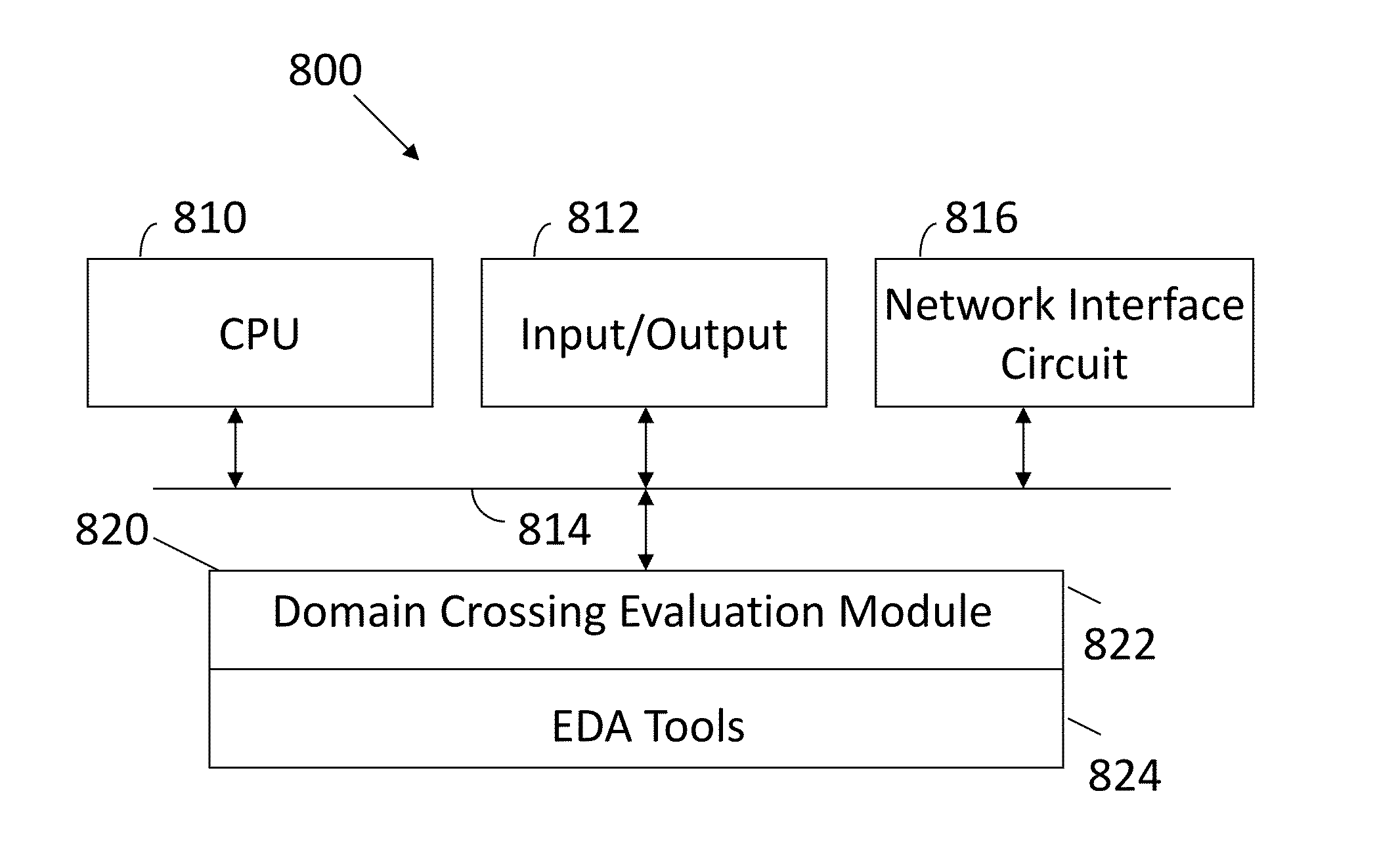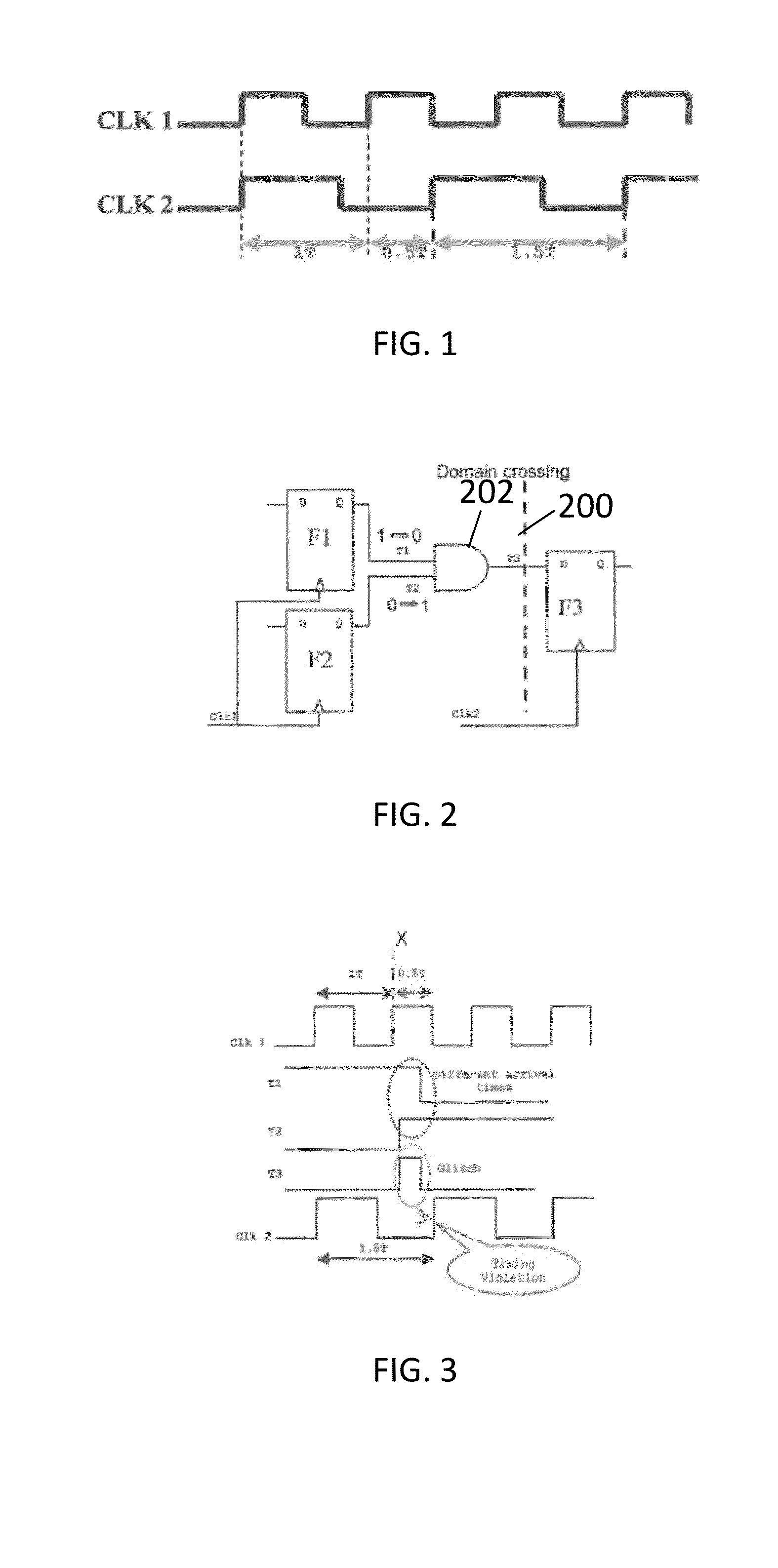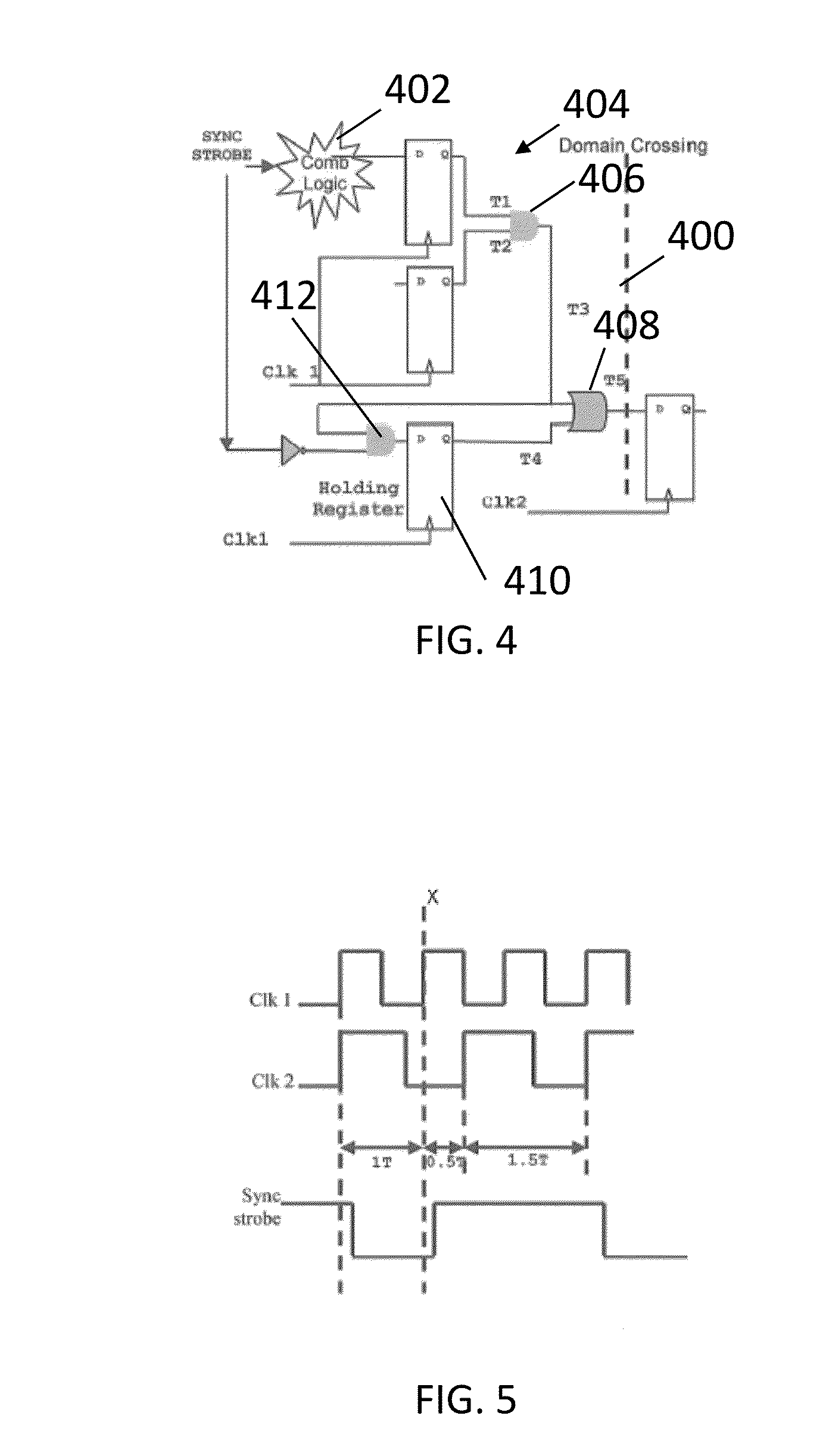Apparatus and Method for Achieving Glitch-Free Clock Domain Crossing Signals
a clock domain and signal technology, applied in the field of digital circuit design, can solve the problems of insufficient functional simulation verification techniques for identifying analog problems, increasing the level of functional and structural complexity of current system-on-a-chip (soc) designs, and increasing the complexity of current system-on-a-chip designs
- Summary
- Abstract
- Description
- Claims
- Application Information
AI Technical Summary
Benefits of technology
Problems solved by technology
Method used
Image
Examples
Embodiment Construction
[0019]Consider two synchronous clock domains that can run at various integer and non-integer clock ratios, such as 1:1, 2:1, 3:2, etc. It is important to avoid fractional cycle-times across clock domains. In other words, a timing constraint between flip-flops across clock domains should be at least one cycle-time of the fastest clock.
[0020]FIG. 1 illustrates 3:2 clock ratio waveforms. Signal CLK1 has three cycles for every two cycles of CLK2. The figure illustrates the possible time periods between positive edge to positive edge of faster clock (CLK1) to slower clock (CLK2) at 1 T, 0.5 T and 1.5 T, where T is the cycle time of the faster clock. A design goal is to have a set-up time of at least 1 T cycle time.
[0021]FIG. 2 illustrates flip-flops F1 and F2 responsive to CLK1. Therefore, the flip-flops are in a faster clock domain. Flip-flop F3 is responsive to CLK2 and therefore is in a slower clock domain. A clock domain crossing is shown with line 200.
[0022]Signals T1 and T2 are lau...
PUM
 Login to View More
Login to View More Abstract
Description
Claims
Application Information
 Login to View More
Login to View More - R&D
- Intellectual Property
- Life Sciences
- Materials
- Tech Scout
- Unparalleled Data Quality
- Higher Quality Content
- 60% Fewer Hallucinations
Browse by: Latest US Patents, China's latest patents, Technical Efficacy Thesaurus, Application Domain, Technology Topic, Popular Technical Reports.
© 2025 PatSnap. All rights reserved.Legal|Privacy policy|Modern Slavery Act Transparency Statement|Sitemap|About US| Contact US: help@patsnap.com



